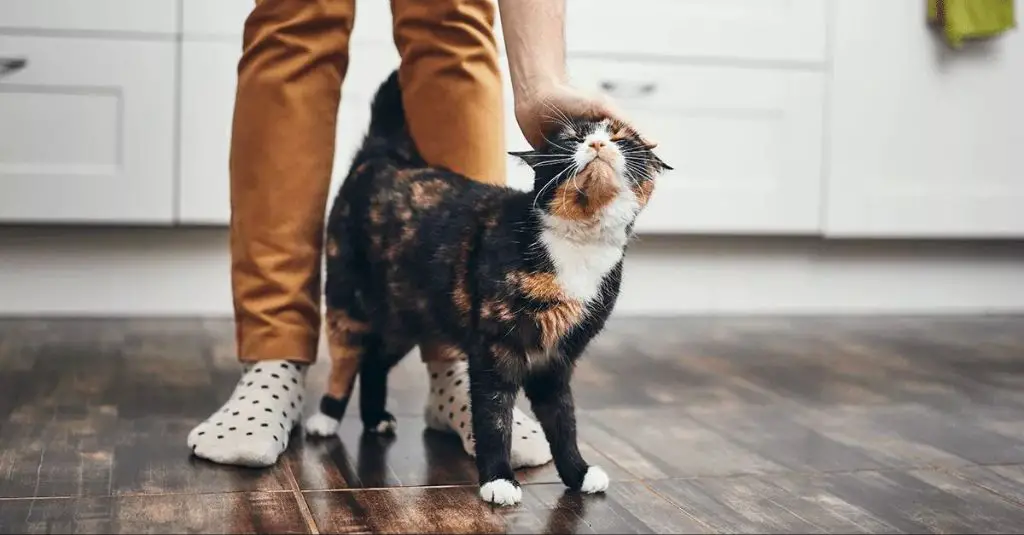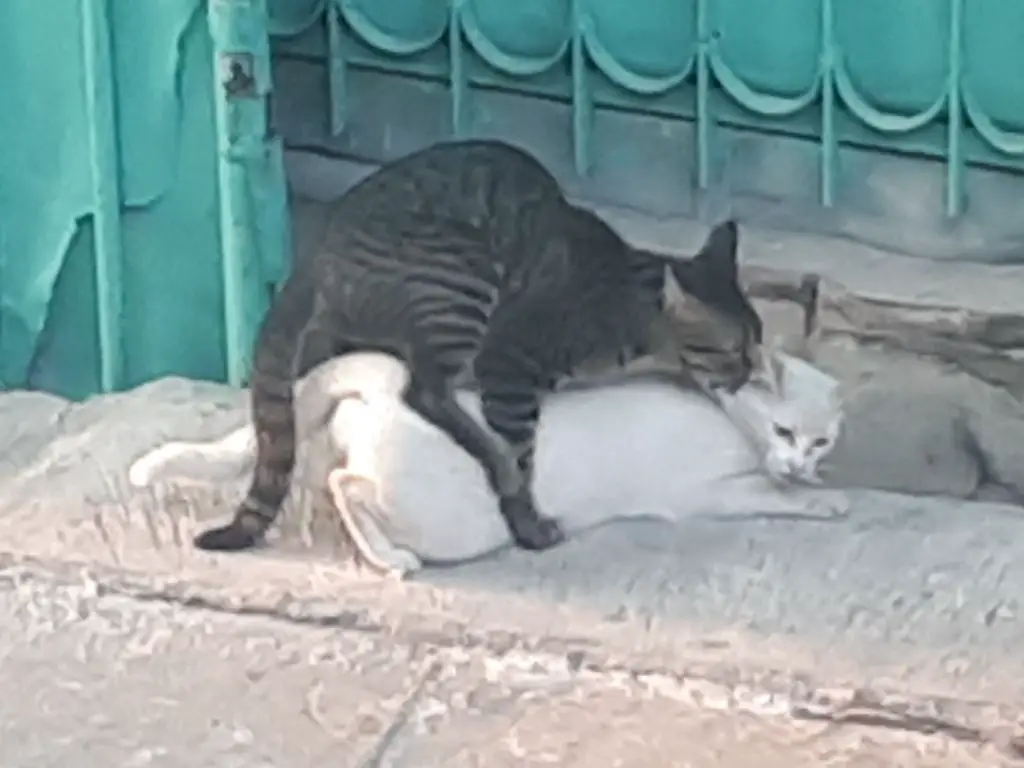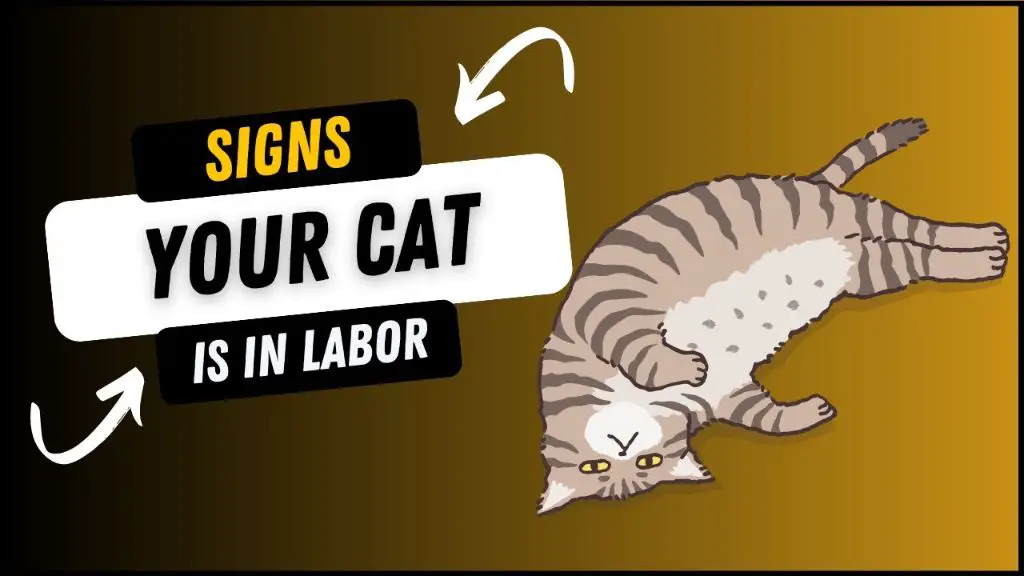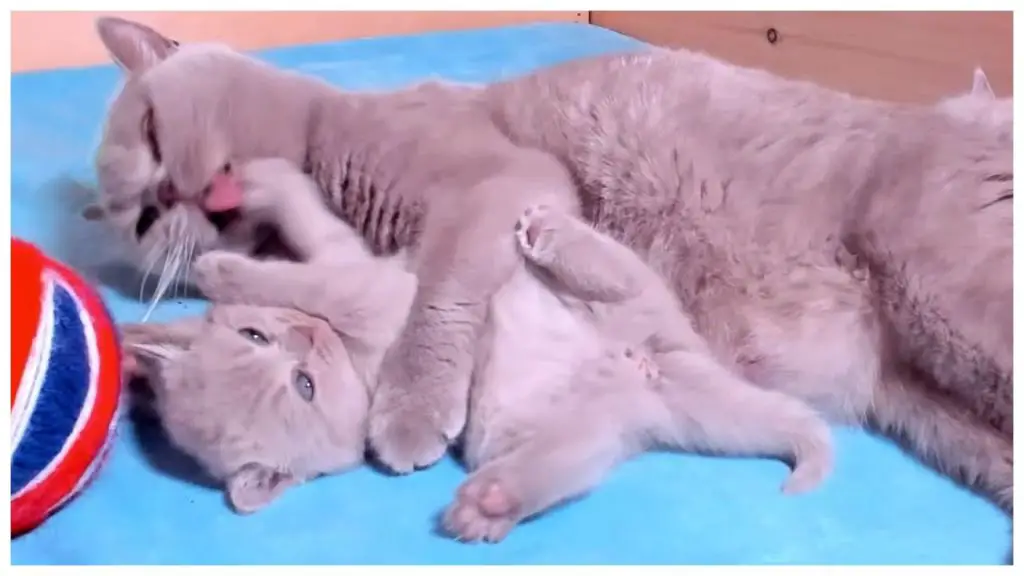Sexual reproduction in cats refers to the process in which cats mate and reproduce to create kittens. It involves a series of biological events and behaviors including puberty, heat cycles, mating, conception, gestation, labor, and birth.
Sexual reproduction starts with puberty, which is the stage when cats reach sexual maturity and become capable of reproduction. Female cats generally reach puberty between 6-9 months of age, while male cats reach it between 8-10 months. Once puberty is reached, female cats go into heat cycles, which is when they ovulate and can become pregnant. The heat period lasts about 4-6 days and occurs every 2-3 weeks during breeding season, which is typically spring and summer.
When a female cat is in heat, she will attract male cats who detect her scent and behaviors. The male cat will mate by penetrating the female cat’s vagina with his penis to deliver sperm. If conception occurs, the female cat will become pregnant for a gestation period of 58-67 days. Finally, the female will give birth to a litter of kittens, usually ranging from 1-8 kittens.
Sexual reproduction is essential for producing kittens and continuing the feline population. It involves complex biological factors in both male and female cats. Understanding the stages of sexual reproduction in cats can help owners know what to expect as their cats mature and breed.
Puberty
Cats usually reach puberty between 4 and 12 months of age (source). The average age is around 6-8 months for females and 8-10 months for males. However, puberty can happen as early as 4 months in some cats (source).
As cats enter puberty, their bodies start producing hormones that lead to sexual maturity. You may notice physical and behavioral changes as signs your cat is reaching puberty:
- Females enter heat cycles and start calling (meowing loudly) to attract males.
- Males become more territorial, marking areas with urine and aggressive towards other males.
- Increased activity levels and restlessness.
- Mounting and masturbation behaviors.
It’s important to get cats spayed/neutered before puberty to prevent unwanted litters. Consult your vet on the best age for spay/neuter surgery.
Heat Cycles
Female cats generally go into heat, or estrus, multiple times per year beginning around 6 months of age. The frequency and length of a cat’s heat cycle depends on factors like time of year and the cat’s breed, health, and age.
On average, cats will go into heat every 2-3 weeks from spring through late summer/early fall. Their cycles tend to get farther apart in the winter, when daylight hours decrease. The duration of heat cycles averages about 4-6 days but can last anywhere from 2-19 days.

During a heat cycle, cats exhibit behavioral changes like increased vocalization and restlessness. They may roll on the floor, rub against objects, and raise their hindquarters in the air while treading their back legs. These are signs that the cat is ready to mate.
Understanding a cat’s heat cycles and signs of estrus are important for controlling reproduction. Spaying a female cat before 6 months of age prevents heat cycles and associated behaviors.
Mating
When a female cat goes into heat, she will attract the attention of intact male cats in the area with loud vocalizations and scent marking. The male cat will begin courting behaviors like rubbing, nuzzling, and licking the female. If the female accepts the male, mating will occur. According to Cat Bandit (blog), during mating the male will grasp the female’s scruff in his teeth and keep her in position. The mating act itself is usually very brief, just a few seconds long. After mating, the male may continue pursuing and trying to mate with the female multiple times over the course of her heat cycle. The whole mating process from start to finish can last between 2-6 days.

Common mating behaviors exhibited by cats include vocalizing, biting, rolling, and swatting as noted by Cat Bandit (blog). After mating, the female cat may roll around on the ground, which some theorize is related to transferring the male’s scent. The male cat may also roll on the ground, potentially to disguise his scent from competing males.
Conception
Conception occurs when a male cat’s sperm fertilizes a female cat’s eggs. This usually happens during mating while the female is in heat (estrus).
Cats are induced ovulators, meaning the act of mating triggers the female’s ovulation. Ovulation occurs 24-48 hours after the first mating. The eggs will remain fertile for 1-2 days after ovulation. Therefore, conception typically occurs 24-72 hours after the initial mating.
It’s important for mating to occur multiple times over several days to increase the chances of conception. This ensures sperm are present when the eggs are released and remain viable.
Signs that conception may have occurred include the female cat becoming less receptive to the male’s advances and no longer calling for mating. Her heat cycle will also end within 2-3 days after successful mating.
Pregnancy can be confirmed around 3 weeks after mating through an ultrasound, palpation, or blood test. If conception occurred, the cat’s progesterone levels will remain elevated.
The gestation period lasts an average of 63-65 days from conception to birth. Providing proper care and nutrition during this time is crucial for a healthy pregnancy and delivery of kittens.
For more details on cat mating and reproduction, check out this guide from The Spruce Pets.
Gestation
The gestation period for cats is approximately 9 weeks or 63-65 days from conception to birth [1]. This can vary by a few days in either direction. During this time, the fertilized eggs travel to the uterus where they implant and begin developing into kittens.
In the first few weeks, the kittens’ eyes, spine, and nervous systems start to form. By 3-4 weeks the heart beats and eyes and ears start to develop. Kittens also start to grow teeth and claws by the fifth week. In the final weeks of gestation, the queen’s abdomen swells as the kittens grow rapidly. They move into position for birthing, and the queen may start nesting and showing signs of impending labor.
An average litter is 4-6 kittens, though first-time mothers typically have smaller litters. The kittens continue developing in the womb until ready for birth.
Labor
The length of cat labor can vary, but generally lasts 6-12 hours. Labor occurs in three stages:

First stage (early labor): The cervix dilates and effaces. Contractions may be irregular and far apart. This stage can last 12-36 hours.
Second stage (active labor): Regular contractions become stronger and more frequent, occurring every 2-10 minutes. The cat may appear restless. Active pushing occurs and kittens are delivered. This stage lasts 2-12 hours.
Third stage (after labor): Delivery of the placentas occurs after each kitten is born. The queen cleans and cares for the new kittens. This stage lasts 1-4 hours. (Source)
Birth
The number of kittens in a litter can vary, with the average litter size being around 4-6 kittens [1]. However, first-time mothers often have smaller litters of 3-4 kittens [2]. The number of kittens depends on factors like the cat’s age and health. Older and more experienced mothers tend to have larger litters.

When it’s time for birth, the queen will begin straining and actively pushing out the kittens. Kittens are born encased in an amniotic sac that the mother will lick open and clear from around the kitten’s face so it can breathe. The mother will bite through and detach the umbilical cord once the kitten is delivered. Kittens are born one by one, usually head first, with 10-60 minutes between each birth. The birthing process can take 2-6 hours from start to finish. The mother will lick and nurse each kitten after birth.
Caring for Kittens
Caring for newborn kittens requires round the clock care and attention in the first few weeks of life. There are some key aspects of kitten care to focus on:
Feeding: Kittens need to be fed every 2-3 hours in the first few weeks. They can be fed kitten formula or milk replacement through a bottle if being hand-raised without a mother. According to DoveLewis, kittens should gain about 10 grams per day.
Keeping Warm: Kittens cannot regulate their own body temperature at first, so keeping them warm is crucial. This can be done with a heating pad, snuggle safe disc, or warming their surrounding environment to 80-90°F.
Stimulating to Pee/Poop: Kittens need help going to the bathroom at first, usually by gently rubbing the genitals with a warm cloth to stimulate peeing/pooping after meals.
Hygiene: Keeping kittens and their environment clean is important to prevent illness. Change bedding, wash hands/bottles, and keep kittens clean after feedings.
Socialization: Kittens need socialization starting at 2-3 weeks old to properly develop. Gently handling, playing with, and exposing them to human interaction helps prevent behavioral issues.
Vet Care: Kittens should see a vet within their first couple weeks for a wellness exam, deworming, and vaccinations.
Conclusion
In summary, responsible cat breeding is important for maintaining healthy cat populations. Cats reach sexual maturity and go into heat cycles around 6-10 months old. During this time, female cats will mate with available male cats, leading to pregnancy. After a 9 week gestation period, a litter of kittens will be born. It is essential that cat owners spay and neuter their pets if they do not plan to breed responsibly. There are many health and behavioral benefits to fixing cats. Additionally, millions of unwanted cats and kittens are euthanized in shelters each year. By spaying and neutering pets, and only allowing responsible breeding, we can reduce overpopulation and improve cat health and welfare overall.

